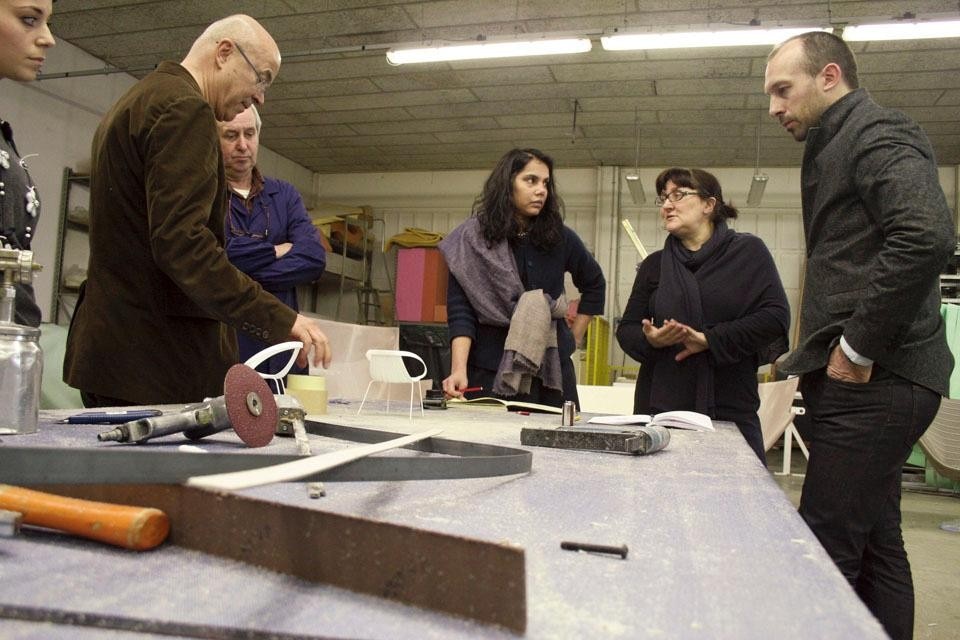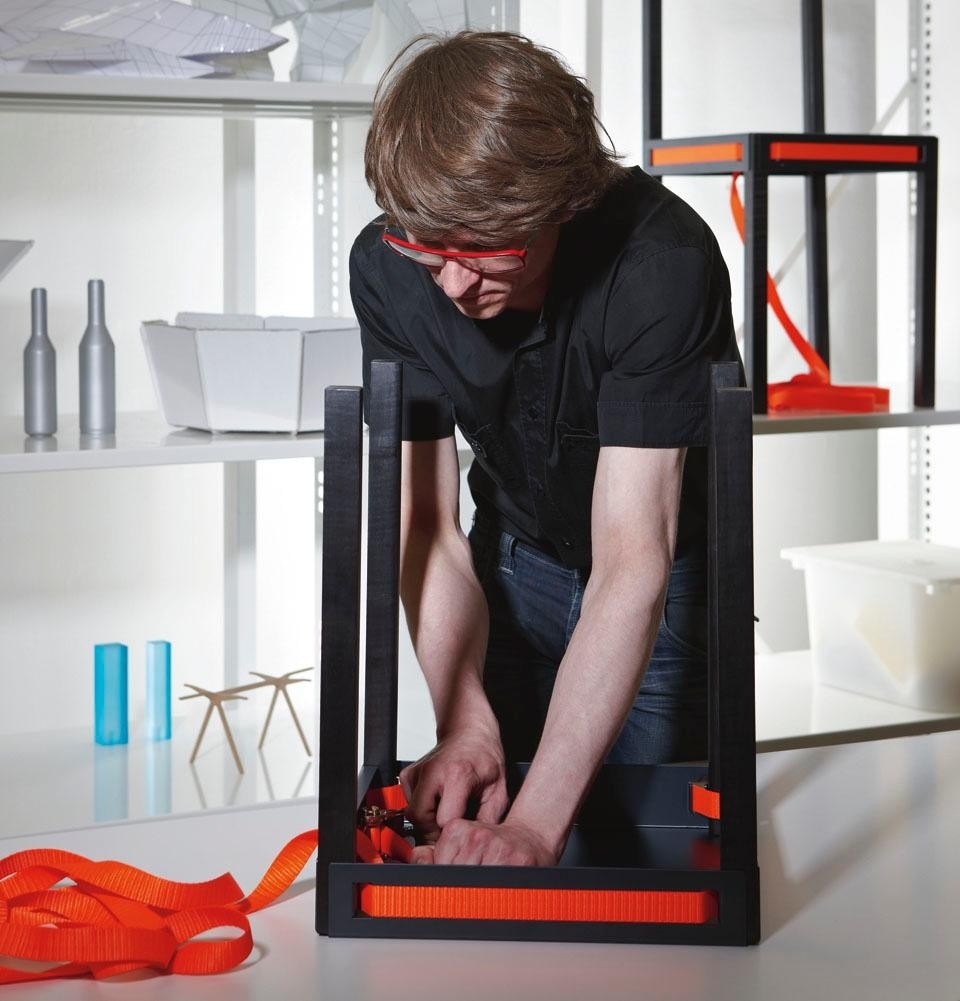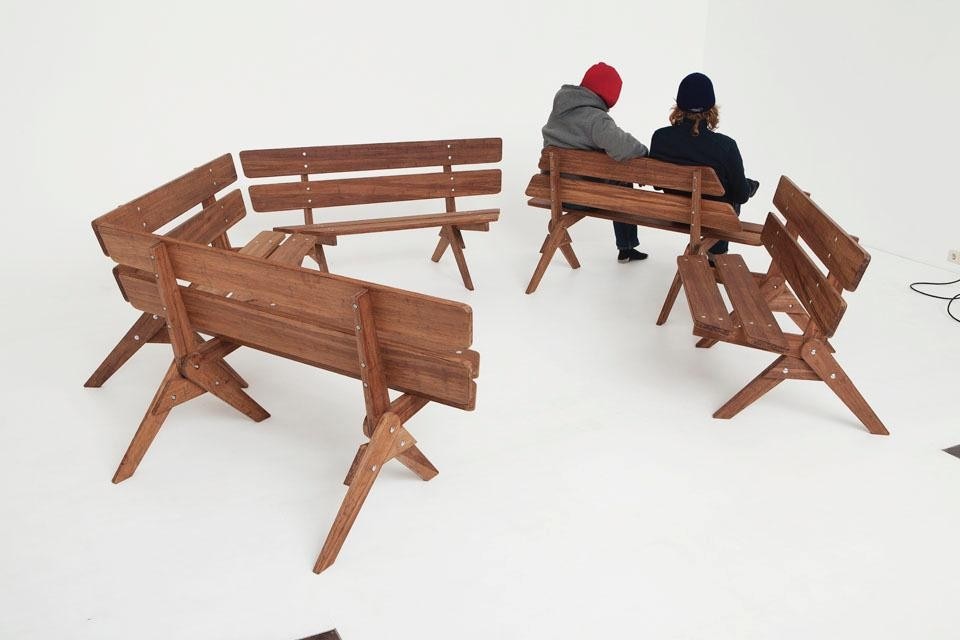A paradox fulfilled: that is how Alessandro Mendini defines his latest version of an undisputed icon of Italian design, the Proust armchair. It was created in 1978 with Studio Alchimia as a redesign of a baroque armchair upon which innumerable polychrome dots were painted by hand. The idea of developing a piece of design starting with an unusual source of inspiration—Proust's visual and object world—has since then been applied with countless variations of colour, forms and materials, including bronze and ceramic. It has travelled worldwide and stopped off at many museums. The latest transformation into an industrial object moulded in rotational plastic is the work of Magis, who have turned the Proust into a technical and manufacturing jewel, a timeless object charged with "a fresh energy of colours and atmospheres".
Salone Pad. 20 C01-D02
Labt
When Frank Ternier (a carpenter who formerly studied painting) founded the firm Labt, his intention was to realise new ideas for furniture to be produced in small editions. He defines his workshop, based in Ghent, as "a greenhouse in which to cultivate ideas and watch them grow from the initial sketch on paper through to the finished product". The first collection of tables includes the contribution of designers with whom Ternier has developed a working practice in the intermediate space between architecture and interior design with the best of the current generation of Flemish architects and creative talents like Jan en Randoald, Henk De Smet & Paul Vermeulen, and Architecten De Vylder Vinck Taillieu. The plywood tables play on the graphic qualities of wood (for example the TTable by Jan en Randoald), or spring from reflection on familiar forms to be "copied" from memory, or adopt a method inspired by tailoring.
Pinacoteca di Brera, via Brera 28
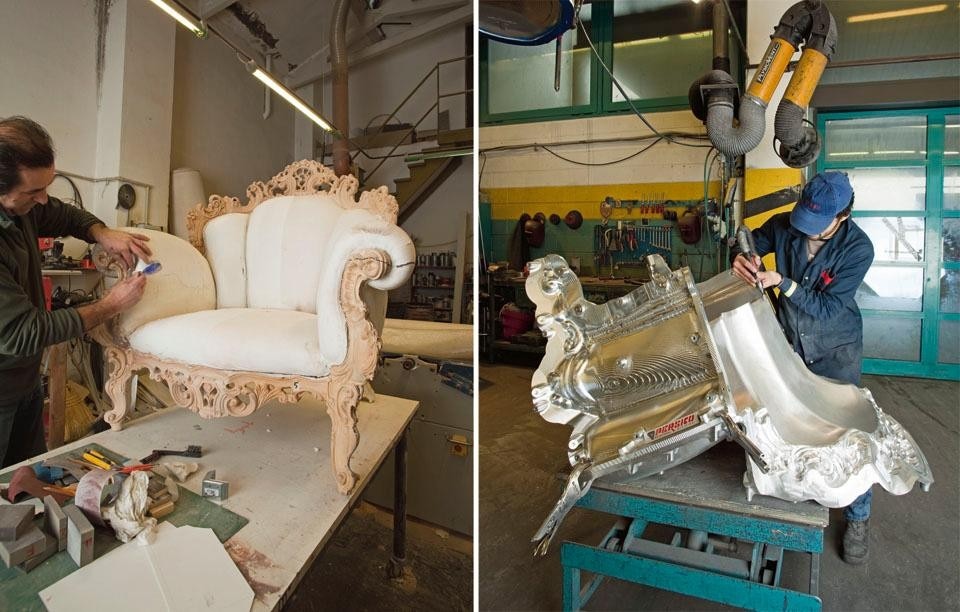
Future Classics
Comforty, the new trademark founded by a solid Polish company specialising in furniture production, carries the positive energy of a country in transformation. Poland has entered the free market with great vitality, despite a past of oneway industrialisation. With equal vigour, the nation has now keyed into design as an opportunity to guide its industrial transformation, thereby prompting it to advance from its role as one of the world's biggest furniture manufacturers (next to China and Italy) to become known as a "producer" of its own designs with a recognisable identity. A competition—from which Philippe Nigro emerged as the winner—has shown how much this new Polish industrial brand is banking on the youthful energy of a group of international designers led by Tomek Rygalik, with the aim of focusing on a fresh identity of differences and common elements.
Superstudio Più, via Tortona 27
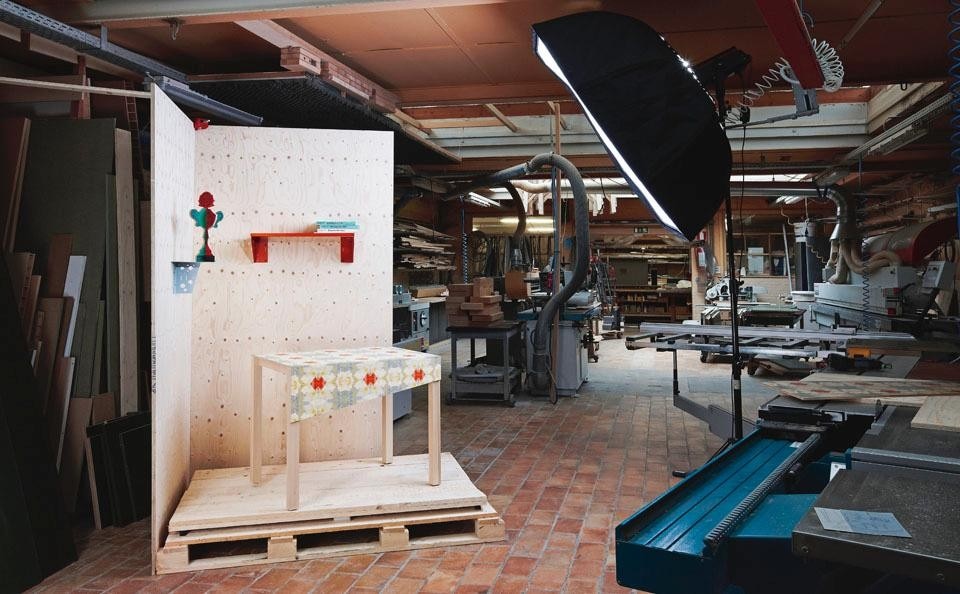
Silvia Suardi
An insect borne on legs of different dimensions and colours that can be clamped as desired to support shelves or tops of changeable shapes. The tubular metal legs can be clad in fabric or leather, while the top is in tempered glass. Like the other pieces by the new Italian brand Colè (an enterprise set up by Matteo De Ponti and Laura Macagno), Asymetrical Table is inspired by the furniture of memory, reinterpreting certain archetypal forms that are updated with a marked sense of lightness and irony. The idea that underlies all Colè products, realised for this debut with the studios Aksu/Suardi and Lorenz/Kaz together with the Colè Design Lab, is to exploit the best craft and semi-industrial processes to be found across Italy, along with sustainability standards firmly based on zero-kilometre principles and on the possibility of making all the product's components in one district.
Giacomo Manoukian Noseda, piazza San Simpliciano 2
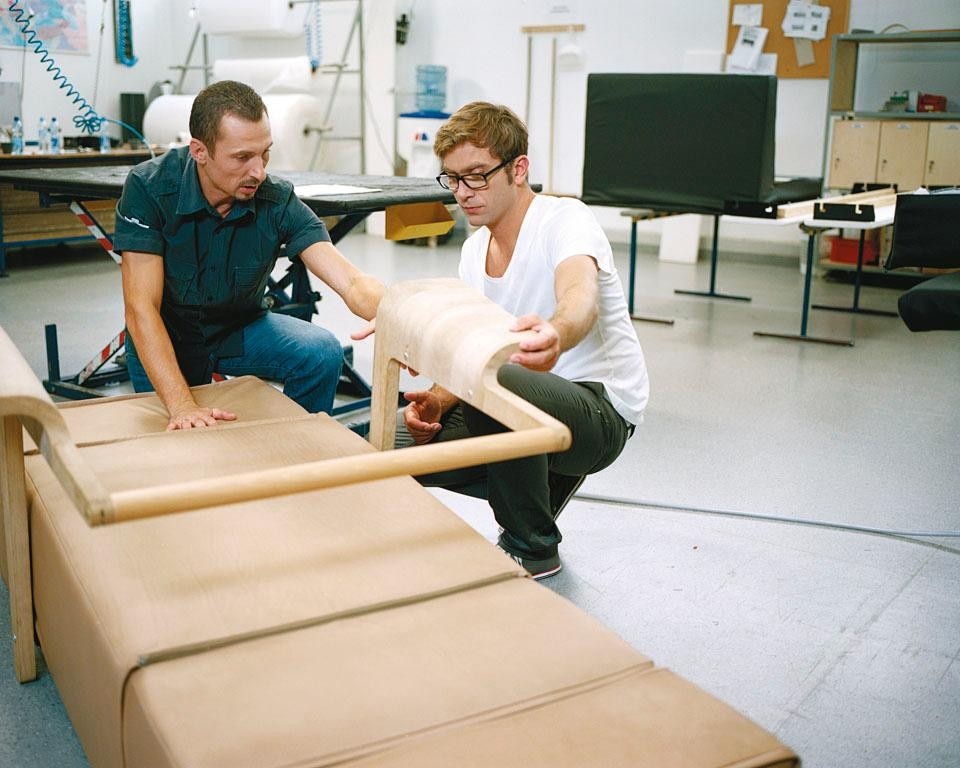
The Brussels-based group, which curated the Belgian Pavilion at the last Venice Architecture Biennale, now presents a design specially created for the Prada space in Via Fogazzaro. Going beyond the borders of mere installation, it offers food for thought on the practice of building. Rotor's exhibition design in Venice surveyed the phenomenon of wear and tear, seen as an inevitable process that can influence environments and behaviour. In Milan, their exhibit will concentrate instead on the reuse of unproductive materials, such as disused catwalk elements from fashion shows. "Beyond the briefness of their existence, their corporality is transformed into a weight," say the designers. The reuse of ordinary and industrial scrap has long united fashion with design and been a constant feature of historic art movements: from cubism to futurism, Dadaism, Nouveau Réalisme and pop art.
Fondazione Prada, via Fogazzaro 36
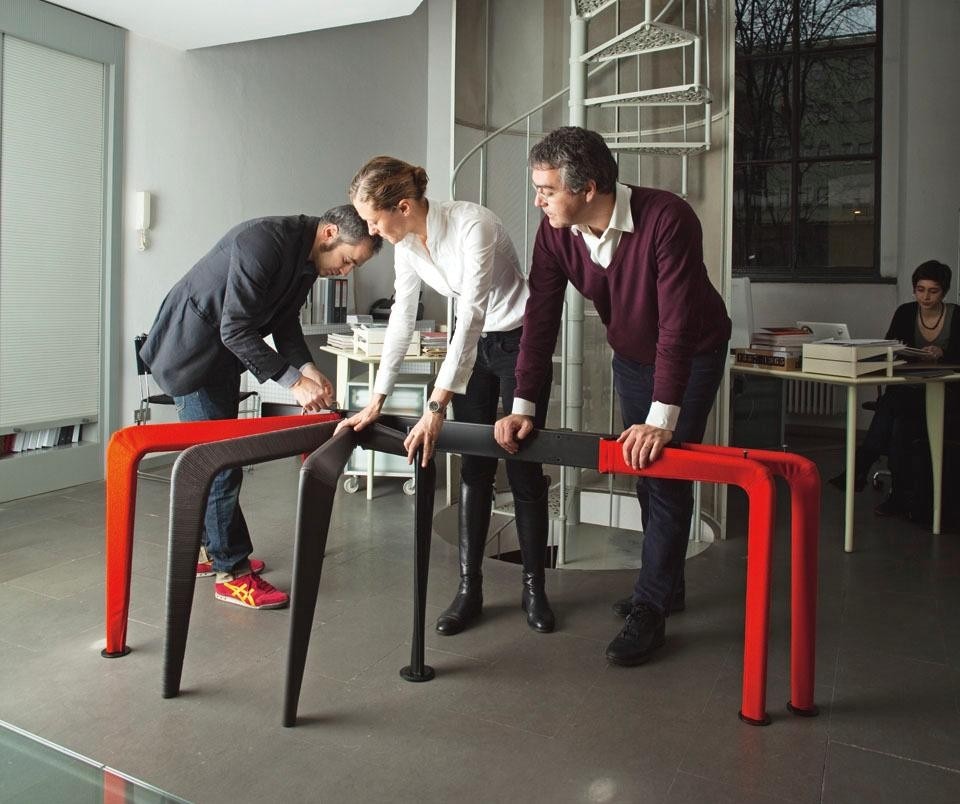
Francesco Faccin is a woodworking virtuoso and a passionate young designer, backed by solid training with Enzo Mari and Michele De Lucchi. This project for Danese has resulted in his first industrially manufactured chair, enabling him to emerge from the sphere of self-production that has characterised his work to date. The chair is the acid test of every designer, and this one by Faccin is defined by its material: a smooth, dense and compact type of plywood. It embodies the aspiration to an accessible, rational and simplified production. Every part of it (legs, seat and back) is made from a single plane: a three-dimensional object composed of elements rigorously cut from a two-dimensional plane.
Danese, via Canova 34
Valentina Del Ciotto
Simone Spalvieri
These two young Italian industrial design graduates have worked together for two years under the common conviction that new products, especially furniture, are inspired by the search for emotion and surprise. For this reason each of their design objects is based on a thorough selection of new materials, signs and meanings. The illusions of material represent the guiding thread that unites the projects they present at SaloneSatellite, including the Sacchetto armchair which sprang from the use of Tyvek for interior design. The two designers devised a method of joining material that requires no glue or seams: the Tyvek sheets are joined by ultrasound welding which makes them waterproof. The visual effect is that of a fragile and delicate paper chair, a sort of outsized bag containing the upholstery. At the same time, it is tremendously resistant and can also be used outdoors.
SaloneSatellite, A6
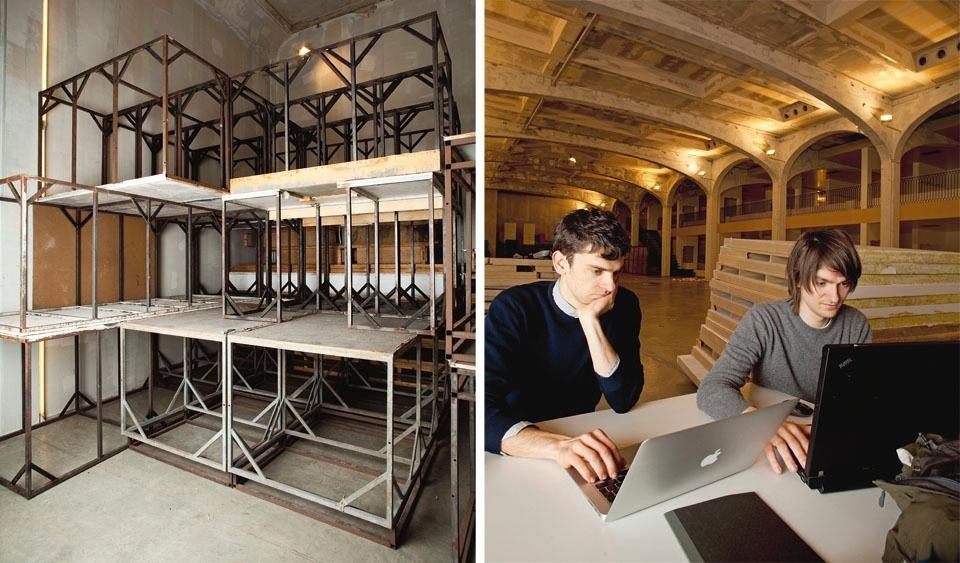
His inspiration comes from the Trussardi archive, an incredibly rich collection of designs ranging from motorboats to cars and from aeroplane interiors to experimental furniture. Many of the historic designs found in the course of his exploration already displayed a surprising wealth of inventiveness and research into new product types. Although he started with designs from the past, the project development is rooted in the present, located geographically between the Como area and Hong Kong, where Young has his office. He took the best of both worlds in order to develop this new range of seating: from Asia the latest 3D technology and all the equipment associated with it, and from Italy the matchless skills of leather-working craftsmen. This is the first in a series of products to be developed for the Trussardi collection.
Palazzo Trussardi, piazza della Scala 5
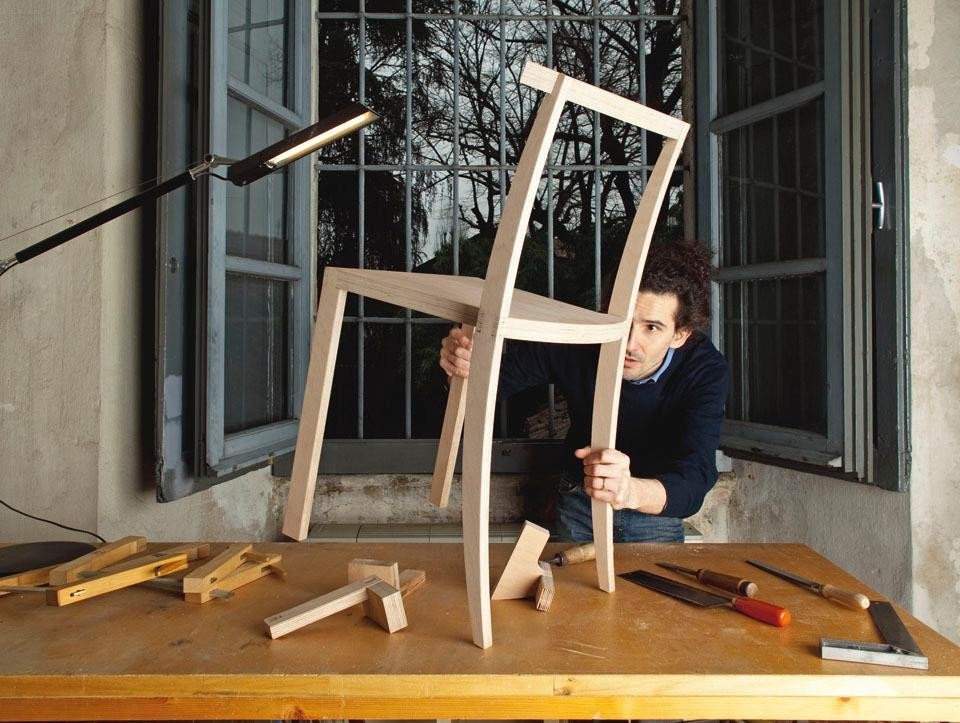
True to ten years of collaboration between the designers and Established & Sons, the Folio shelving system—presented in the off-Salone circuit together with a new collection—is a poetic object created with very few elements and a starkly essential vocabulary. The search for a simple but richly technical and formally inventive process to keep an interior in order is developed by combining the extreme functionality of flat shelving with the more elaborate use of cabinets and doors. With Folio, objects can thus be hidden behind a felt "curtain" attached to the base of an oak shelf via an aluminium mechanism.
Teatro Versace, piazza Vetra 7
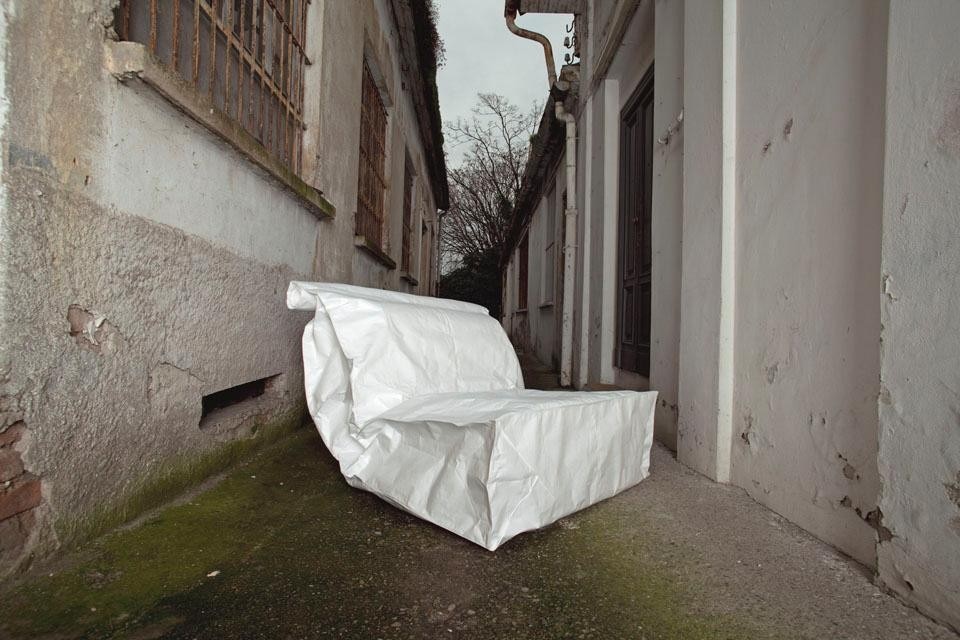
The organically shaped Glory lamp, designed for the Spanish company Vibia, uses a combination of polyester (85 per cent) and lycra (15 per cent) laminated with a polyurethane film. This is then shaped and glued onto a support frame to achieve forms with a double curvature that enable the designer to create attractive lighting effects. The lamp comes in a variety of sizes, with diffusers in three or seven cavities, shaped as irregular reversed pyramids. These are attached to the pedestal column with magnets to facilitate removal while ensuring a secure fixture. The diffusers in the suspension version are connected to three steel cables fixed to a ceiling base.
Salone, Pad. 9 D06-C15
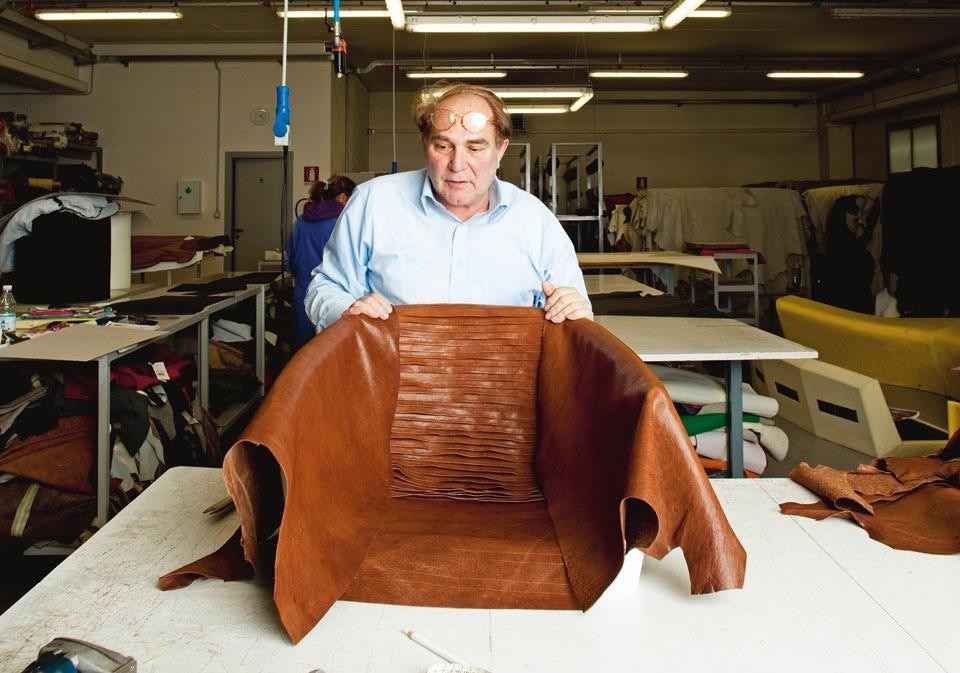
Jonathan Levien
The work of this Anglo-Indian duo, who have now developed a proven design harmony with Patrizia Moroso, is concentrated on the visual and tactile qualities of "liquid wood", a material whose properties are different to those of any other industrial plastic. This thermoplastic compound used for the Impossible Wood chair, with 80 per cent wood fibre and 20 per cent polypropylene, can be processed using normal injection moulding machinery. The pressure and heat emitted during the moulding phase release the wood's humidity, which burns on the aluminium surface to create an irregular oxidised effect similar to that of leather. The characteristics of this material (which even smells like wood) inspired Doshi Levien for this seating: the form takes its cue from the work of African-American sculptor Martin Puryear, and in particular his Cedar Lodge of 1977.
Salone, Pad. 16 C23-D22
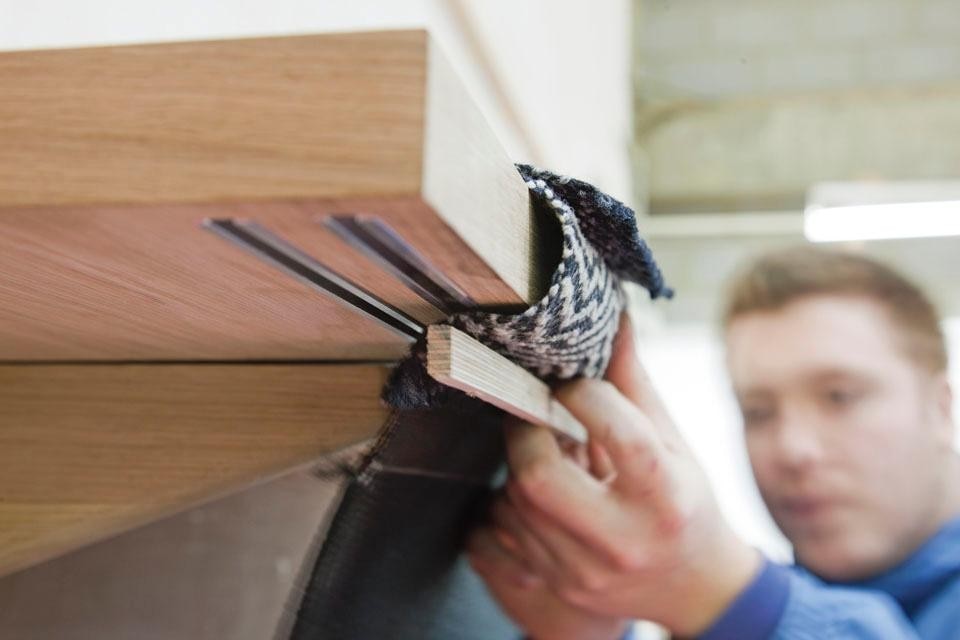
This young French designer, who started making cupboards before studying as an industrial designer at ECAL in Lausanne, now brings the Fast collection of chairs and tables to Salone Satellite. With their design based on versatility, the chairs and tables can be made quickly to meet contingent needs. The system is inspired by the belt found in some traditional wood tables, which is here exploited as the structural element to characterise the whole collection. In Chaboz's work, the system is now so strong that chair and table legs can be fastened to seating and worktops without the aid of screws.
SaloneSatellite, A10
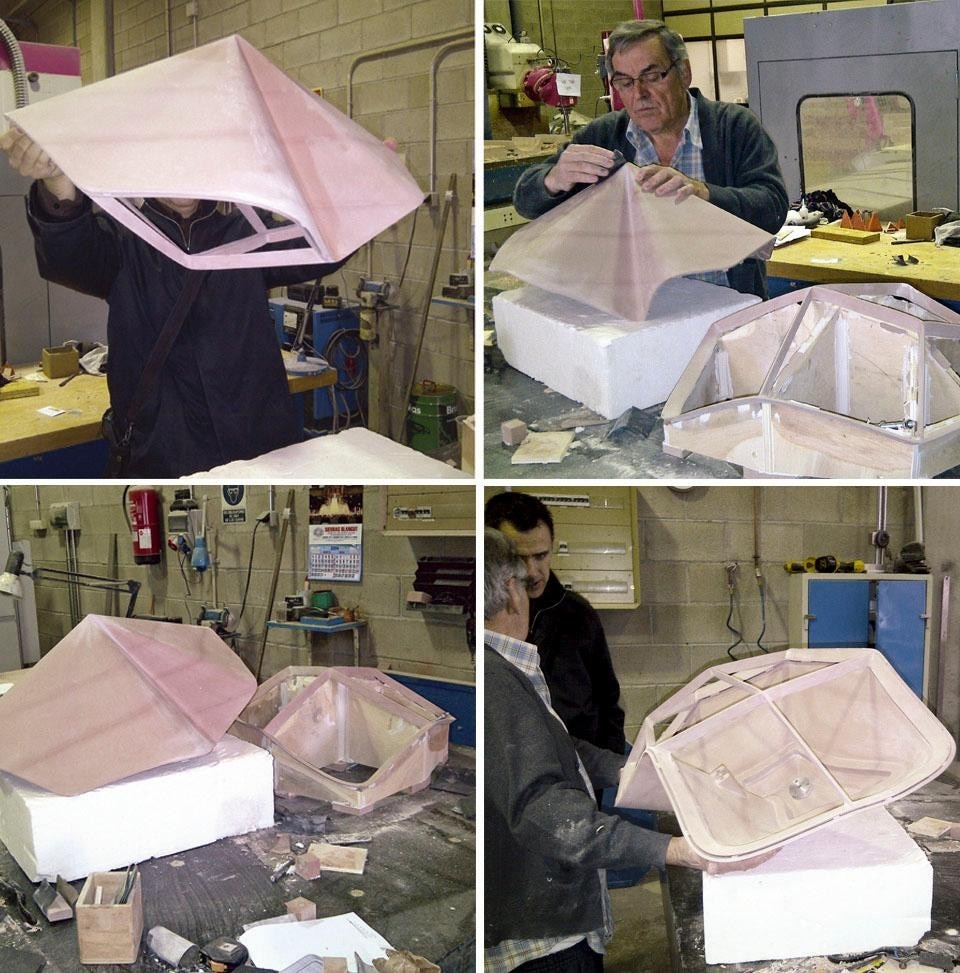
Jair Straschnow ik
Esterni brought in these two Dutch designers, who recently won the Brit Insurance Design of the Year Award from the Design Museum in London, to contribute to the birth of Esterni Design, a new brand which showed the first item in its collection, a circular bench, at the Public Design Festival. An object-manifesto of urban furniture created in 2006, it invites users to socialise and relate to others even in urban contexts that are not always friendly. It is made of untreated wood and has a reclining backrest for extended pauses.
Cascina Cuccagna, via Cuccagna 2/4
